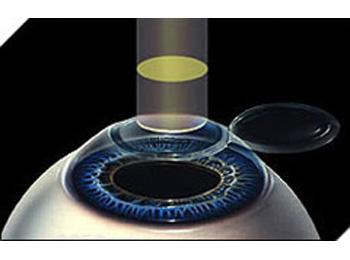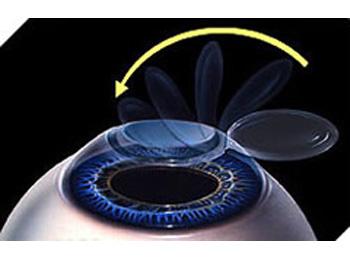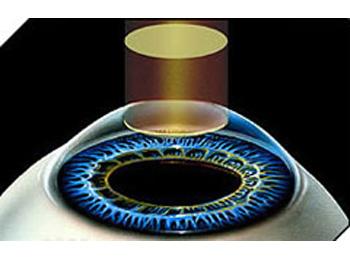Laser vision correction involves the use of laser energy to treat nearsightedness, farsightedness, and astigmatism of the eye. The most exciting advance in this field is the development of the excimer laser, which is used for laser in-situ keratomileusis (LASIK) and photorefractive keratectomy (PRK). The excimer laser works like an exquisitely precise scalpel, removing microscopic amounts of corneal tissue under computerized control. Physicians at Baylor Medicine participate in several clinical trials to investigate new and improved methods of correcting vision with the excimer laser. Some of the vision correction procedures available at Baylor Vision include the following:
LASIK (Laser in situ Keratomileusis)

LASIK is an excimer laser surgical procedure that treats the middle layers of the cornea to correct nearsightedness, farsightedness, and astigmatism. LASIK is performed using numbing drops to prevent pain during the procedure. At Baylor Vision, we perform bladeless LASIK. A vacuum ring secures the eye while a thin corneal flap is created with the IntraLase® laser. This flap is folded back, and the excimer laser treatment is performed in the bed of the corneal flap. The VISX laser reshapes the cornea to treat the refractive error. This portion of the procedure typically lasts 10 to 90 seconds. The flap is then folded back into its original position and carefully positioned to complete the procedure.

Advantages of LASIK eye surgery include:
• Little or no discomfort following the surgery
• Recovery of vision often within 1-2 days
• Low risk of developing haze following treatment
• The relative ease of doing additional laser treatment should be necessary.
As with any surgical procedure, complications can occur, including those that could result in loss of vision. Fortunately, severe complications are extremely rare.
PRK (Photorefractive Keratectomy)

PRK uses the excimer laser to reshape the front surface of the cornea to change its focusing power. Surface cells of the cornea (the epithelium) are gently removed from the central portion of the cornea to expose the region of the cornea that is treated with the laser. The actual laser time is similar to that of LASIK. The surface cells require three or more days to heal, and a soft contact lens is placed over the eye during this period to serve as a bandage. PRK is often an excellent alternative for those patients who may not be candidates for LASIK. Whereas most LASIK patients achieve useful vision within a day or two, it sometimes takes a few days for PRK patients to regain useful vision. PRK patients usually are required to use drops in the eye for up to four months after surgery. Long-term results with PRK are similar to those with LASIK, and for specific individuals, PRK can offer significant advantages over LASIK.

Koch recognized as a leader in ophthalmology
Dr. Doug Koch, professor of ophthalmology, was included on The Ophthalmologist's Power List of 2018, a list of the most influential professionals in the field. Koch is recognized in the publication as an expert in improving outcomes of cataract and refractive surgery and for specializing in the management of complex conditions of the eye.








